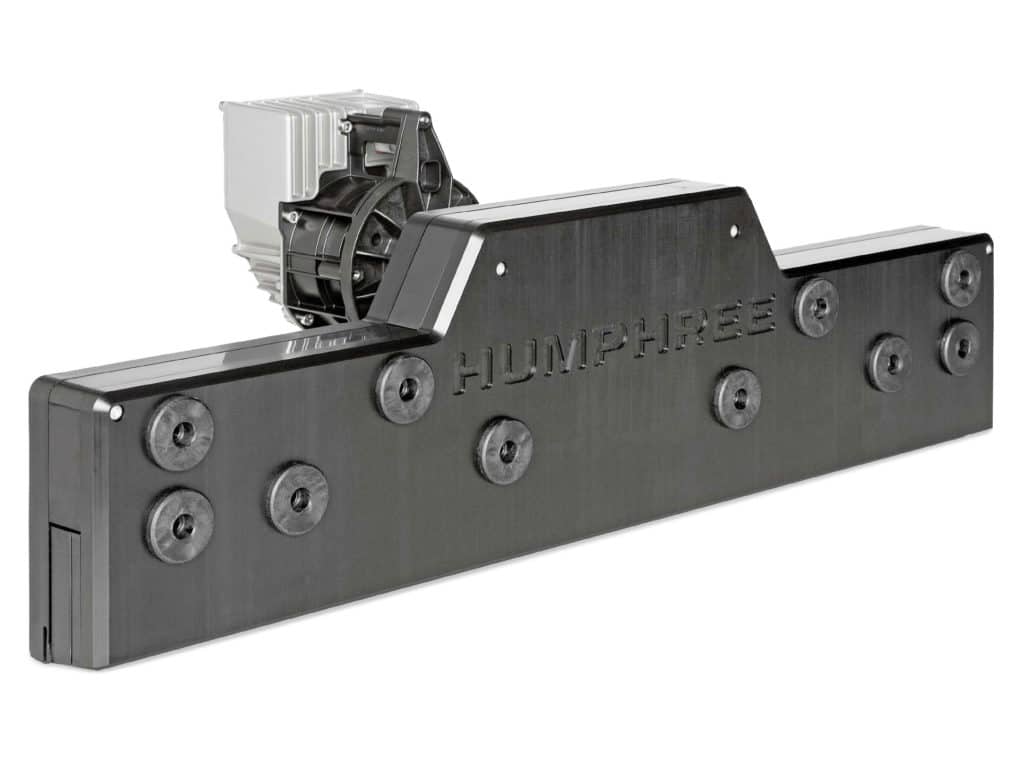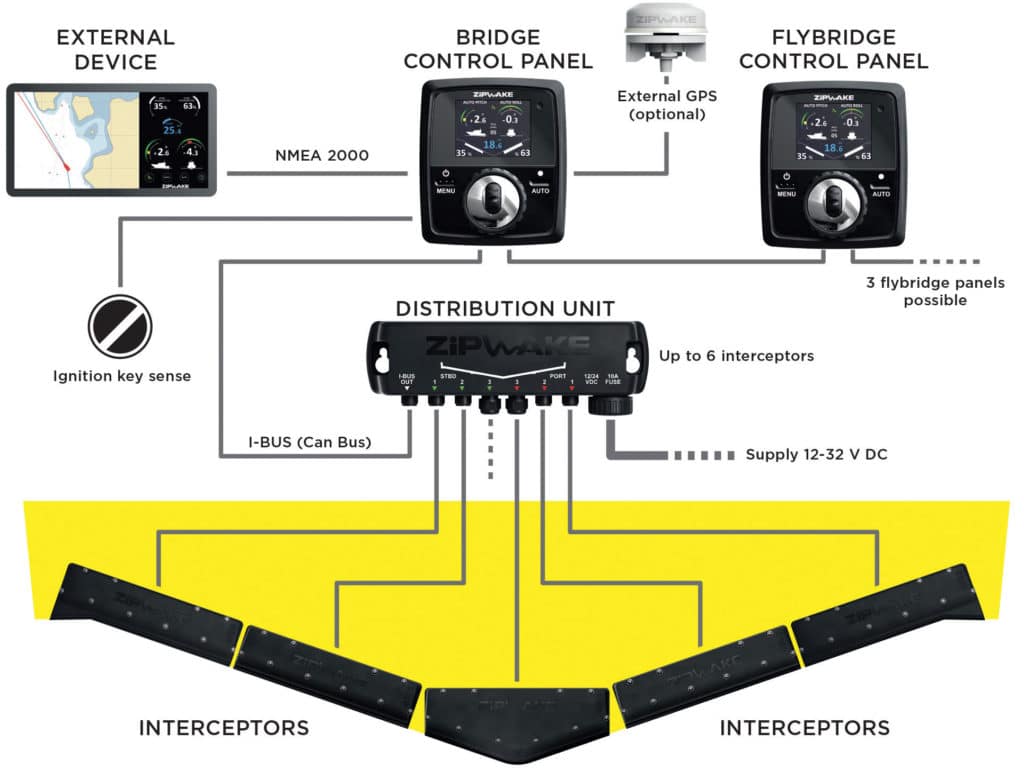
Interceptors are not trim tabs. Yes, they are planes or foils installed on the transom of a boat that, when deployed, act to affect the trim of the boat in the fore and aft, and port and starboard orientations. But they differ in several significant ways. With some time running interceptor-equipped boats, coupled with technical expertise from recent interviews with Sean Berrie of Humphree America, maker of Humphree Interceptors (humphree.com), and Jamie Simmons of Imtra, maker of Zipwake interceptors (zipwake.com), I’ve compiled the following tips. If your boat is equipped with interceptors, try them out. If you’re thinking of buying a boat equipped with interceptors or installing them aboard your present boat, here’s a glimpse at how they’ll perform.
Differences With Tabs
Interceptors move vertically, as opposed to trim tabs, which operate horizontally. Simply put, interceptors can create more lift with less surface area, and they can also be extended and retracted much faster than trim tabs. Factoring drag-to-lift benefits is beyond the scope of this article. Just know that interceptors are smaller in size, and extend and retract at faster speed.
Manual Use
With interceptors, there is no discernible lag, so one adjusts trim in real time rather than waiting for the boat to respond. This is convenient if crew are moving around a lot or your course is a snaky one, requiring repeated trim adjustments. Of course, the quick response might mean a learning curve for boaters used to tabs until they get the feel.
Auto Systems
Computer-speed-gyro-accelerometer-controlled systems for both trim tabs and interceptors do a great job. In my experience, for most situations, one can “set it and forget it.” About the only time I turn it off and use manual is if I am running a breaking inlet; this environment requires anticipation. One might deliberately want excess bow up momentarily in following seas, especially breakers. So, I advise using manual mode when the ebb opposes the sea breeze.

Stability
Providing ride stability is the feature that decidedly makes interceptors more than just another flavor of trim tabs. Because they can react so quickly, and due to the computerized control, interceptors will continuously, alternately and independently extend and retract to keep the boat level and in trim at planing speeds. In fact, it is at higher speeds where interceptors provide the most stabilization because they create more lift as the force of water flowing against them increases. So, don’t expect much stability from your interceptors at trolling speed or at rest—that’s what a gyrostabilizer is for. But from semi-displacement speed on up, they excel. Interceptors also dampen not just roll, but also pitch. For these reasons, a gyrostabilizer and interceptors can be seen as complementary rather than competing systems.
Turning
By automatically adjusting the heel angle as the boat arcs through a turn, most boaters find they can make sharper turns at higher speeds without gears sliding around as much, or crew becoming concerned or losing their grip or footing.
Read Next: How to Trim a Boat When Making Turns
Buying Them
Cost always arises as a question; the range and variety of boats and applications makes any kind of average price irrelevant. I will state that interceptors will cost more than most trim tabs. Note that there are no “simple” interceptor systems—without computerization and so forth—and the highest-end, fully automated trim-tab systems might begin to rival the cost of interceptors. You’ll have to price out a system for your specific boat.









